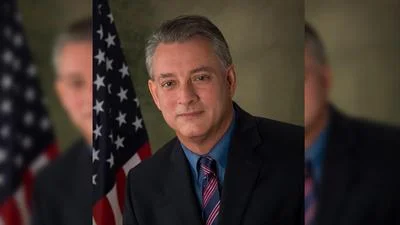WASHINGTON, D.C. - Senior DOE officials shared their visions for advancing the EM mission and highlighted significant cleanup accomplishments to the Environmental Management Advisory Board (EMAB) last week.
“There are dedicated people who want to get work done. How I view the role of headquarters is to facilitate that, to help them get it done, to eliminate roadblocks, identify barriers, and knock them down," EM Assistant Secretary Anne White told members of the board, which provides the head of the cleanup program with information, advice, and recommendations on issues affecting EM.
White and Paul Dabbar, DOE Under Secretary for Science, laid out their objectives for accomplishing more work more efficiently through contract changes and regulatory reform, emphasized the importance of a “completion mindset" for cleanup, and thanked the board members for their sound advice and other contributions to the program.
“It’s important for us to continue to deliver for risk reduction for the communities, for the taxpayer, to do things as efficiently as possible, and once again, I appreciate this group," said Dabbar, who served on EMAB for 12 years before becoming Under Secretary for Science last year.
White pointed to EM’s successful track record - the closure of the Rocky Flats, Fernald, and Mound cleanup sites - to show how the program is competent in finishing projects safely and successfully.
“I know EM can do good things," she said. “We’re capable of a closure mindset, a completion mindset, bias for action, moving the ball down the field. I still see it when I go out to the sites."
It was White’s first address to EMAB since she was sworn in as EM’s Assistant Secretary in late March.
“I’m really happy to have the benefit of your collective experiences. It’s going to help out the program greatly," she said. “I’m looking forward to really getting the best utilization for this board to really support some of the things we’re going to be doing over the next couple of years."
The Department is focused on improving burdensome regulations that get in the way of efficiently accomplishing DOE’s missions, Dabbar noted. Inclusive teams from the Department’s Laboratory Operations Board are reviewing regulations involving operations at DOE national laboratories and sites, he said.
Outlining several recent major cleanup successes, Dabbar noted that the board has a long history around those accomplishments. In his remarks, he highlighted those accomplishments, including:
* Completing waste retrieval activities at the last underground waste storage tank in C Tank Farm at the Hanford Site late last year;
* Continued progress with Hanford ’s Direct Feed Low-Activity Waste (DFLAW) approach to tank waste treatment in advance of the court-ordered milestone date of 2023. “DFLAW is turning over operational system after system every week," Dabbar said;
* Completing the transition at Los Alamos National Laboratory to new cleanup contractor, Newport News Nuclear BWXT-Los Alamos, LLC. Dabbar noted it’s EM’s first standalone contract at Los Alamos National Laboratory. “That’s going very well," he said; and
* Approving the start of construction of a new $288 million underground ventilation system at the Waste Isolation Pilot Plant (WIPP), which is key to increasing shipments of transuranic waste to WIPP from cleanup sites.
“There are a number of things that we have going on that we’re really positive about," Dabbar said.
Source: U.S. Dept. of Energy, Office of Environmental Management









